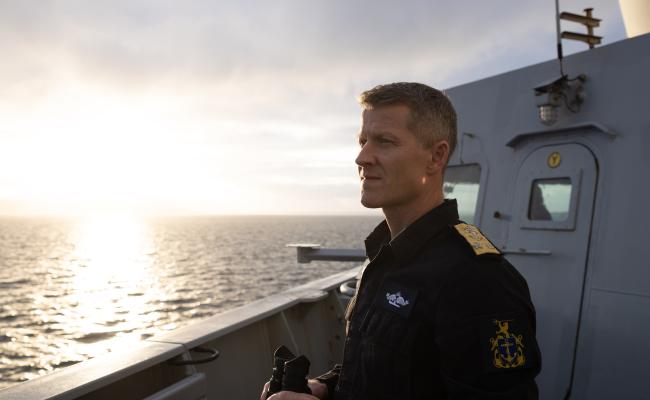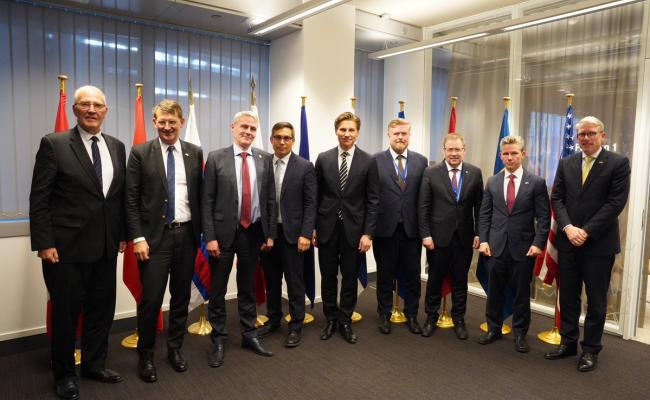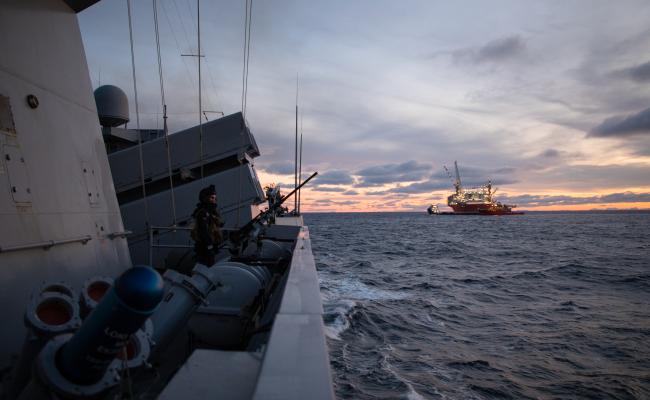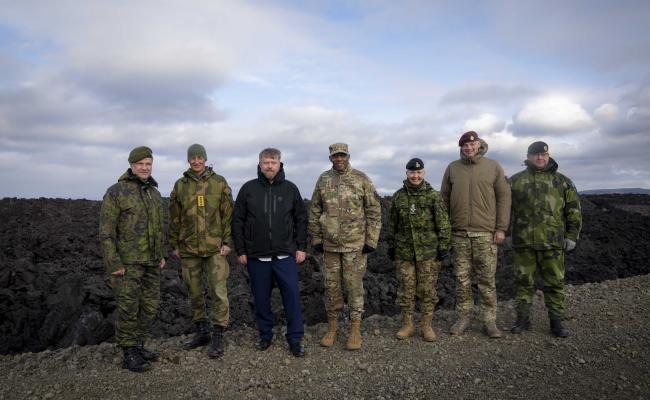“NATO Keeps a Close Watch Over Maritime Activity in the North,” Says COMSUBNATO

Chief of the Norwegian Submarine Service, Captain Jim Robertsen, recently received the Commander of NATO Submarines, Rear Admiral Bret Grabbe, at the Norwegian Navy's main base Haakonsvern outside Bergen, Western Norway. (Photo: Malene Flekke/the Norwegian Armed Forces)
NATO conducts regular submarine patrols in the North Atlantic and also surveils maritime activity closely using aircraft and surface ships, says the alliance's Commander of Submarines during a visit to Norway. Recently, Norway’s submarine HNoMS Utstein completed a NATO-led patrol in the North.
NATO has intensified maritime patrols and surveillance flights in the High North and the Atlantic, through the Baltics and down to the Mediterranean in direct response to Russia’s ongoing warfare in Ukraine, states the Allied Maritime Command (MARCOM).
In MARCOM’s leadership staff, we find Rear Admiral Bret Grabbe, Commander Submarines NATO (COMSUBNATO). He has the operational command of submarines assigned to NATO and plans and conducts the alliance's submarine-focused exercises.
“NATO keeps a close watch over maritime activity in the High North, including through regular submarine patrols," says Grabbe to High North News via a video link.
He recently visited the Norwegian Navy's main base, Haakonsvern, in Western Norway, to meet with the Chief of the Norwegian Submarine Service, Captain Jim Robertsen, and the crew of the Norwegian submarine HNoMS Utstein, which carried out a NATO-led patrol in the North Atlantic earlier this autumn.
Heavy Russian investment
How would you describe today’s Russian submarine activity in the North Atlantic and Arctic?
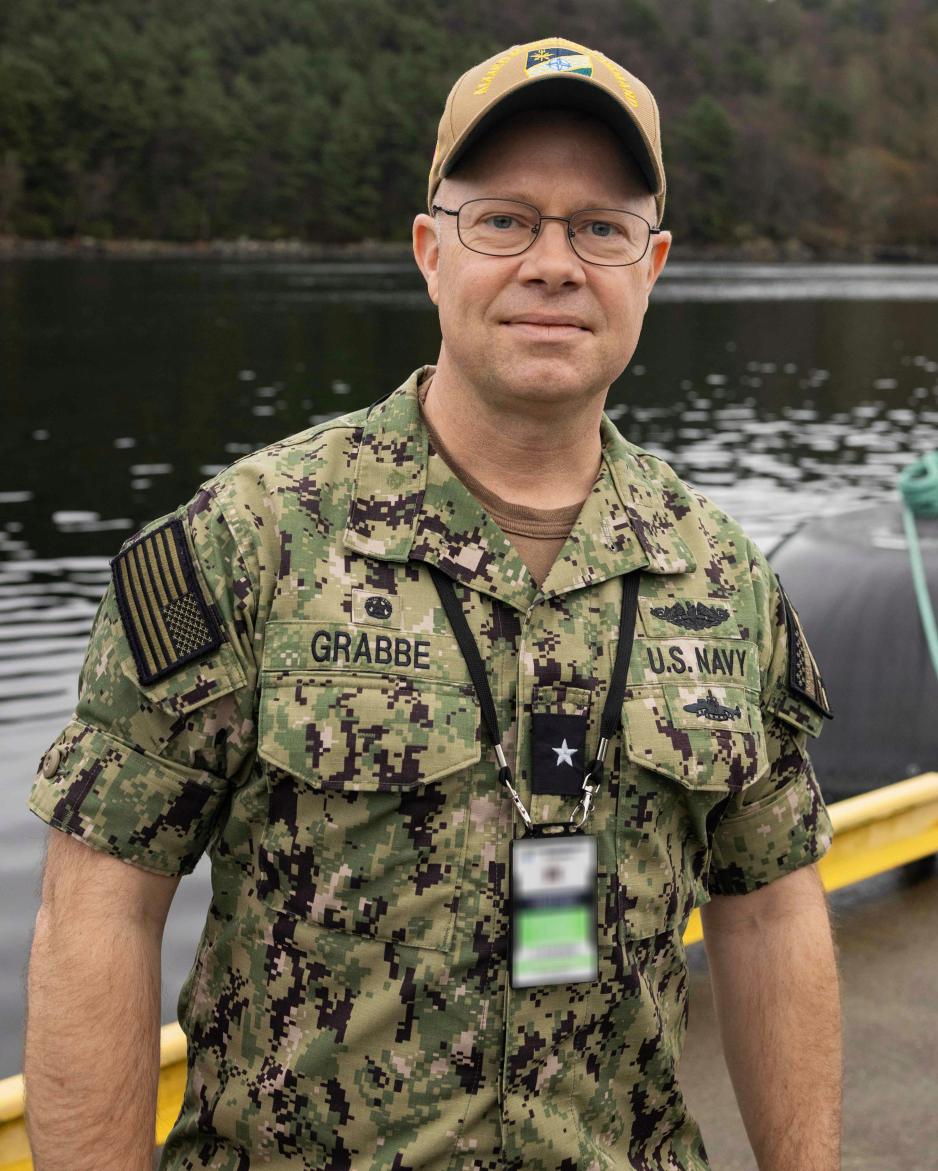
Commander of NATO Submarines, Rear Admiral Bret Grabbe. (Photo: Malene Flekke/the Norwegian Armed Forces)
“This is something that we focus on routinely. All 32 members of NATO work together every day to maintain our situational awareness and readiness for collective defense and rapid response,” Grabbe replies.
Have there been any changes in Russian submarine activity level and operational patterns in these sea areas in recent years, maybe especially after the Baltic Sea became a ‘NATO lake’?
“We do not have a tradition of commenting on opponents' specific operations. However, I can say that it is very clear that Russia is still investing heavily in its submarine forces. This only makes it more important that we operate closely together as NATO allies,” the the rear admiral of the US Navy underlines.
Sensitive
Submarine activity – both Russian and allied – is a sensitive topic.
Jim Robertsen, the Chief of the Royal Norwegian Submarine Service, also can't say much about what they know about what Russian submarines or other naval forces are doing in northern water.
"I cannot comment on how Russian marine vessels operate. But I can say the following: We have not noticed that Russia's military operations in Ukraine have affected its marine forces in the north to any significant extent," says Robertson to High North News.
Rarely, however, do the top Allied military leaders lift the veil somewhat, as General Christopher G. Cavoli, Supreme Allied Commander Europe (SACEUR) and Commander of the US European Command (USEUCOM), did in April 2023 to the US Congress:
SACEUR Cavoli on Russian submarine activity
“Much of the Russian military has not been affected negatively by this conflict [in Ukraine, ed. note]. One of those is the undersea forces. It’s hard to talk in public about undersea warfare and our efforts in that regard. But I can say that the Russians are more active than we’ve seen them in years. Their patrols into and throughout the Atlantic are at a high level, most of the time at a higher level than we’ve seen in years,” said General Cavoli in a statement to the House Armed Services Committee.
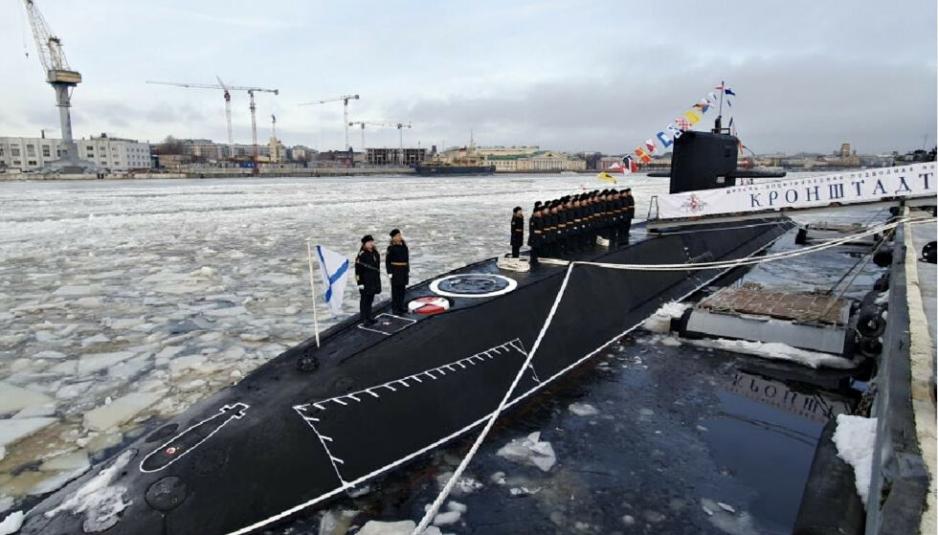
Kronstadt of the Lada class is among the Russian Northern Fleet's new submarines. It is armed with Kalibr cruise missiles and had its flag ceremony in St. Petersburg in January. (Photo: the Russian Ministry of Defense)
More important to Russia
Based on the Norwegian Defense Commision's report from the spring of 2023, one can assume the following concerning the High North:
The Russian Northern Fleet has gained increased significance as NATO countries now dominate the Baltic Sea – and the access to the Atlantic Sea for the strategic and tactical submarines that operate from the Kola Peninsula has become more important to Russia.
"Thus, a Russian desire for access to the Atlantic Sea for submarine operations overlaps with NATO's need for sea control in Norwegian ocean areas. This dynamic is the object of continuous operations and high priority among the nuclear weapon states," stated the Defense Commission.
Receiving allied reinforcements in the North requires establishing sea control in the North Sea and the Norwegian Sea, as well as sea denial in the Barents Sea, which was practiced during this winter's integrated military exercises Nordic Response and Joint Warrior.
Central naval terms
• Sea control, or command of the sea, refers to control of all military and civilian activity in a sea area.
• Sea denial involves denying the counterpart control over a sea area without having control yourself.
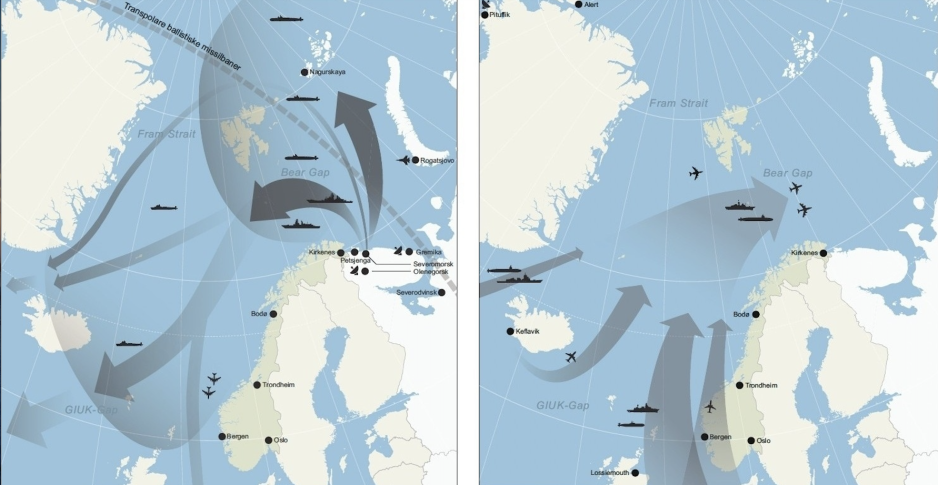
Illustrations of respective Russian and Allied military activity in the High North. (Source: The Norwegian Defense Commission's report, NOU 2023:14, figures 10.7 and 10.8, pp. 144-45)
Freedom of navigation
“NATO is very focused on upholding freedom of navigation in accordance with the Law of the Sea in all its areas of responsibility, including the North Atlantic and the Arctic,” says Grabbe.
This includes securing maritime trade routes and protecting the alliance’s main lines of communication that enable transatlantic reinforcement during crises and conflicts.
With a view to this, the submarines on NATO-led patrols are set to carry out surveillance and deterrence. In addition to HNoMS Utstein, submarines from Sweden and the Netherlands have also conducted such missions in the North Atlantic this fall.
“The submarine patrols are very important for us. They covertly contribute to maritime situational awareness across the entire Euro-Atlantic area along with other platforms for gathering information and intelligence.”
Grabbe refers to i.a. satellite systems that monitor maritime traffic while reconnaissance aircraft and drones conduct aerial surveillance missions for more accurate identification. On the surface, patrols are carried out by, e.g., frigates with sonars and anti-submarine helicopters.
“In total, there are 14 NATO countries that have submarines. All of these contribute to the alliance's maritime situational awareness, either by providing submarines for NATO-led patrols or submarines operating under national command sharing intelligence and information with NATO. So, this is a team sport,” Grabbe notes.

COMSUBNATO, Rear Admiral Bret Grabbe, thanks the crew of HNoMS Utstein for the efforts they have recently carried out for the alliance. (Photo: Malene Flekke/the Norwegian Armed Forces)
Good learning outcome
For the submarines on NATO patrol, there are also opportunities for training with other allied aircraft and surface combatants important in anti-submarine warfare, Grabbe points out.
This is also highlighted by the Chief of the Norwegian Submarine Service.
"Conducting such a patrol provides us with the opportunity to collaborate closer with other NATO forces and good experience with operation under a NATO command rather than just national command," says Robertsen and continues:
"In addition, it sends an important signal that we want to contribute to NATO's operations in the North Atlantic. When NATO operates in our immediate areas, we want to participate."
More concretely, HNoMS Utstein participated in NATO's activities for enhanced vigilance, Neptune Strike. This involved joint training in the North Sea with, among others, the US aircraft carrier USS Harry S. Truman and the UK aircraft carrier HMS Prince of Wales with their respective escorts.
"For the KNM Utstein crew, both the patrol operation and the co-training have yielded very good learning outcomes. Up against forces of this size, we get full-fledged training," says Robertsen.
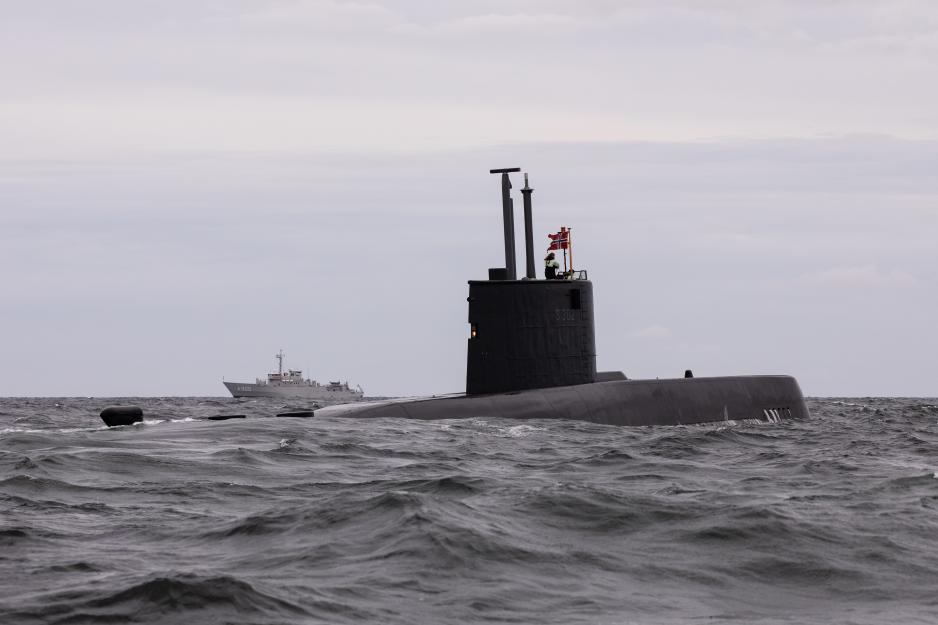
HNoMS Utstein is one of Norway's six Ula-class submarines. (Photo: Magnus J. Horne/the Norwegian Armed Forces)
Submarine-focused exercises
“NATO also conducts annual exercises on anti-submarine and anti-surface warfare: the Dynamic Mongoose exercise in the North Atlantic and the Dynamic Manta exercise in the Mediterranean Sea. With the addition of Sweden and Finland in NATO, we are now also enhancing anti-submarine capabilities at the Merlin exercise in the Baltic Sea,” Grabbe says and continues:
“The manta is a fish, the mongoose a land animal, and merlin a bird. This points to the three main domains within which anti-submarine warfare takes place – subsurface, surface, and air. So, we practice interoperability between submarines, surface vessels, and aircraft during these exercises.”
Norway is among the regular participants in Dynamic Mongoose and often also the primary host nation for the exercise.
Every three years, NATO also organizes the submarine rescue exercise Dynamic Monarch, alternately in warm and cold waters. During this, the various stages of search and rescue are practiced in a race against time. This year's edition took place in September off the coast of Southern Norway.
“It underscores the importance of international cooperation in ensuring that all nations are prepared to respond swiftly and effectively to submarine emergencies. The skills and experiences gained here will significantly contribute to the interoperability of our navies and broader maritime security cooperation initiatives,” Grabbe maintains.
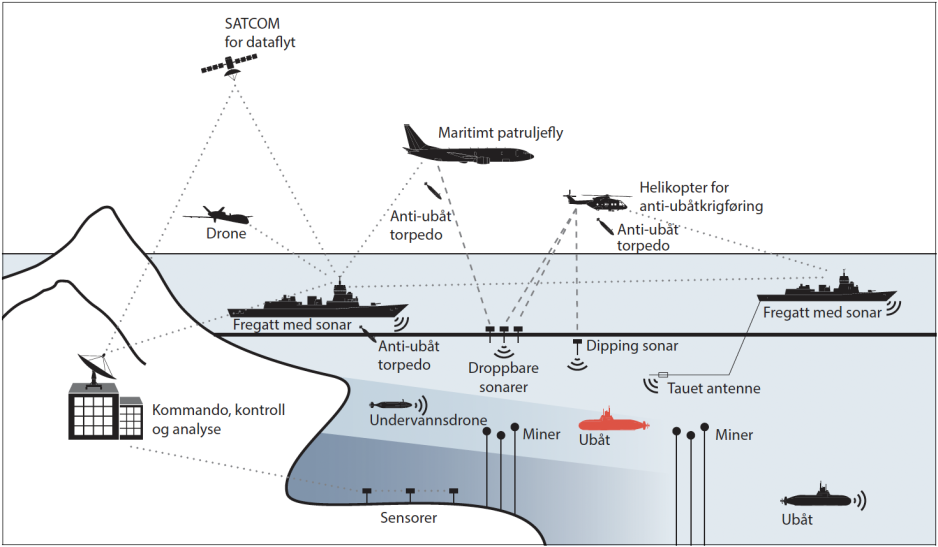
Anti-submarine warfare is a complex joint operation that includes capabilities at sea, on land and in the air, as well as in space and cyber space. (Source: The Norwegian government's long-term defense plan 2025-2036, figure 4.2 p. 69)
Dynamic Mongoose 2024
• Dynamic Moongose is NATO's annual advanced anti-submarine warfare and anti-surface warfare exercise in the High North, led by COMSUBNATO.
• The 2024 edition occurred this spring in the sea areas between Greenland, Iceland, the United Kingdom (GIUK gap), and Norway.
• Participating countries: Norway (primary host nation), Denmark, the Faroe Islands, Sweden, Canada, USA, the United Kingdom, Germany, the Netherlands and Spain.
• Submarines from Norway, Sweden, the USA, and the Netherlands alternated between hunting and being hunted in interaction with ten frigates and other surface vessels, as well as eight maritime patrol aircraft.
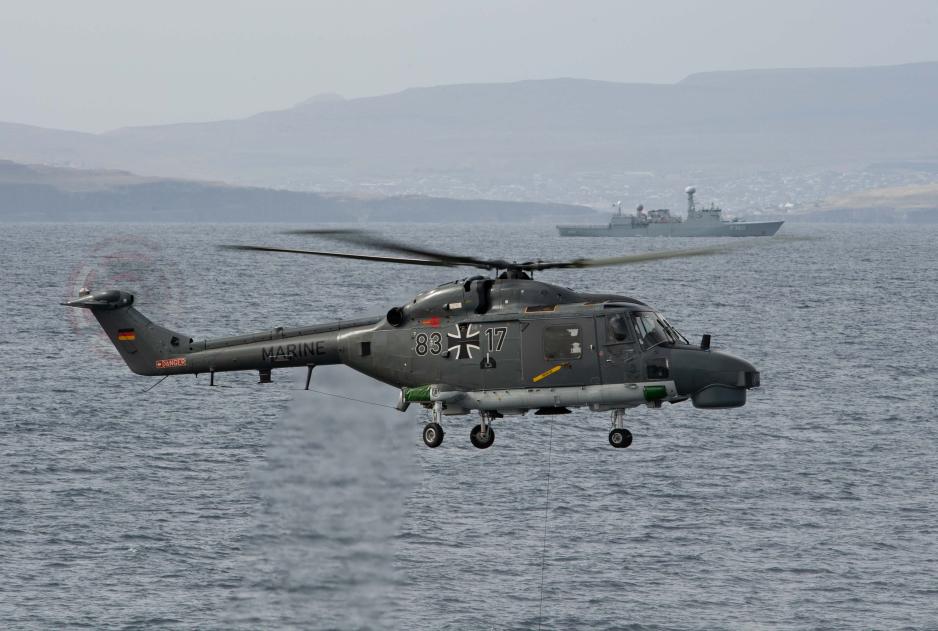
The Danish frigate HDMS Niels Juel and its helicopter practice anti-submarine warfare off the Faroe Islands during Dynamic Mongoose 2023. This exercise series strengthens NATO’s ability to detect and respond to threats posed by sub-surface forces. (Photo: Fran S. Dzioba/NATO MARCOM)
Risks
How does NATO work to prevent misunderstandings and accidents vis-à-vis Russian submarines and other Russian vessels during operations in the North Atlantic and the Arctic?
“All Nato nations operate professionally in accordance with the Law of the Sea, so I do not really consider this to be a particularly relevant issue. Our submarine forces also have high-level skills, and I have great confidence that they act in a safe and disciplined manner, ” Grabbe replies.
At the same time, there are examples of unfortunate collisions between submarines that operate closely.
In 1992, the US submarine USS Baton Rouge (SSN) collided with the Russian nuclear submarine Kostroma in the Barents Sea off the coast of Murmansk, Northwest Russia. Reportedly, there was no damage to the vessels or personnel, according to the New York Times.
Similar submarine collisions had happened before but had not been discussed publicly, said the US DoD to the newspaper.
Can you say something about the significance of the open direct line between the Norwegian Joint Headquarters and the Russian Northern Fleet concerning submarine activity?
“This is a national initiative and not for me to comment on. In general, however, I can say that dialogue can be important and that maintaining lines of communication can add valuable understanding to situations," responds the rear admiral.
Allied submarine investments
Naturally, Russia is not the only one investing in modern submarines that are silent running and demanding to follow.
“All allies with submarine forces are now investing in their national capabilities for a continued strong presence in the underwater domain into the future. It is important that we maintain undersea dominance against all of our adversaries,” Grabbe says.
As known, Norway is acquiring new submarines in a strategic partnership with Germany. The first order was for fire submarines, but two more will now be acquired.
The Norwegian-German cooperation includes the joint purchase and extensive cooperation on identical submarines of the 212 Common design class. The design plays on different technological competence advantages in the two countries.
“The partnership between Norway and Germany enhances the two countries' capabilities and interoperability, which is a clear advantage from a NATO perspective. New technology, more capacity, and the demonstration of increased interoperability make the Alliance stronger in the face of any challenge in the maritime domain,” Grabbe emphasizes.
From four to six new Norwegian submarines
• In 2017, Norway ordered four 212DC submarines in cooperation with Germany.
• The Norwegian government recommended acquiring an extra submarine, with an option on yet another, in its proposal for a new long-term defense plan presented this spring.
• The Norwegian Parliament unanimously adopted this long-term plan in June with a request to trigger the option on the sixth submarine.
• This is being followed up by the government and negotiations are now underway for two additional submarines.
Significant boost
That the current six Norwegian submarines of the Ula class will be entirely replaced by six new ones is very positive, says Commander Robertsen.
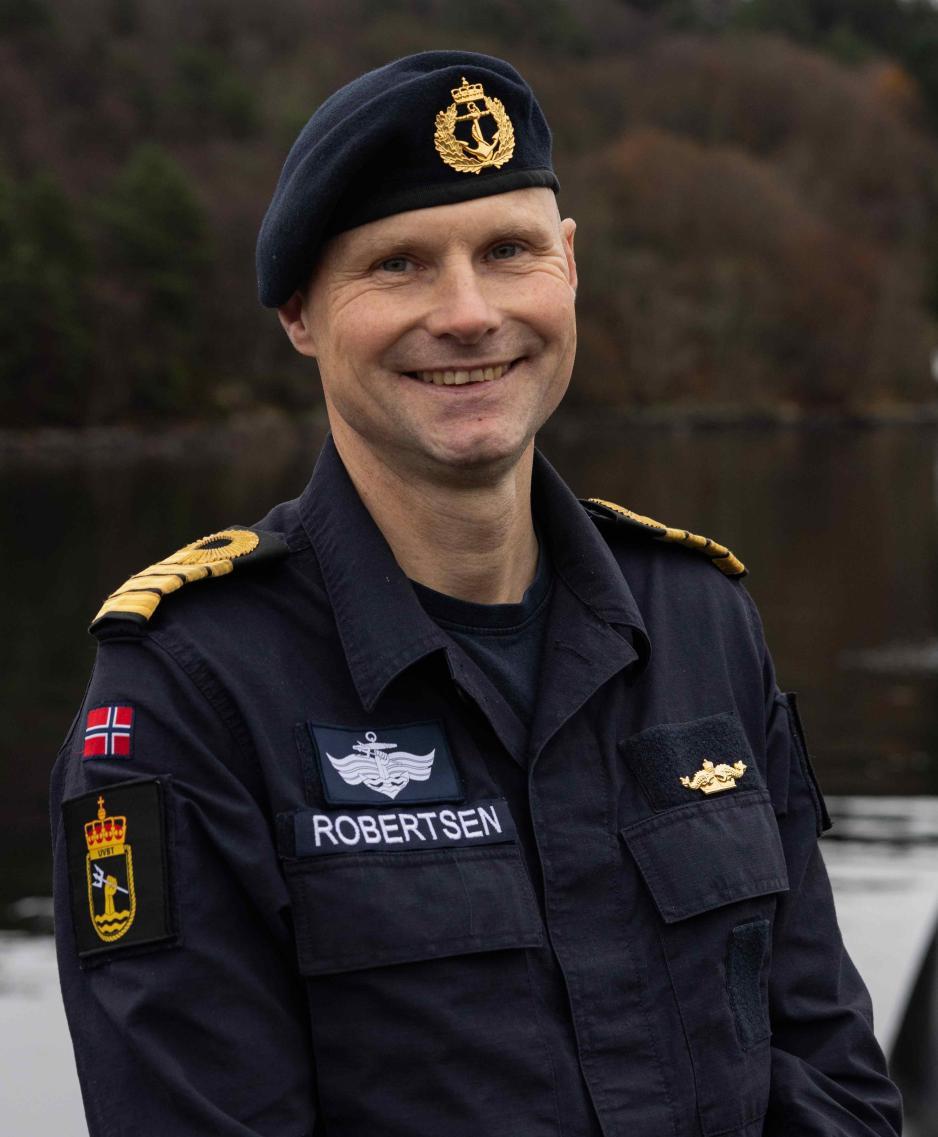
Jim Robertsen, the Chief of the Royal Norwegian Submarine Service. (Photo: Malene Flekke/the Norwegian Armed Forces)
"Two of these are currently under construction in Germany, and the first will be delivered in 2029. The first crew will begin training as early as 2026. Getting six new submarines and that this is now starting to materialize gives a boost throughout the entire submarine service. We are very much looking forward to putting them to use," the Norwegian Submarine Chief underlines and continues:
"With the extra two, we will have almost twice the availability of submarines in regard to sailing in the ocean areas, which is very significant for our ability to deter. The ability to ensure practical force production is also strengthened with six submarines versus four."
More specifically, having six available submarines means that several can be out on patrol simultaneously – and force enemy submarines and other vessels to operate far more defensively off the Norwegian coast.
"The submarines have enormous striking power while also being able to operate covertly for a very long time. With this combination, they contribute significantly to the Norwegian Armed Forces' deterrent effect because any enemy that is going out with its forces must take the submarine threat into account," Robertsen points out.
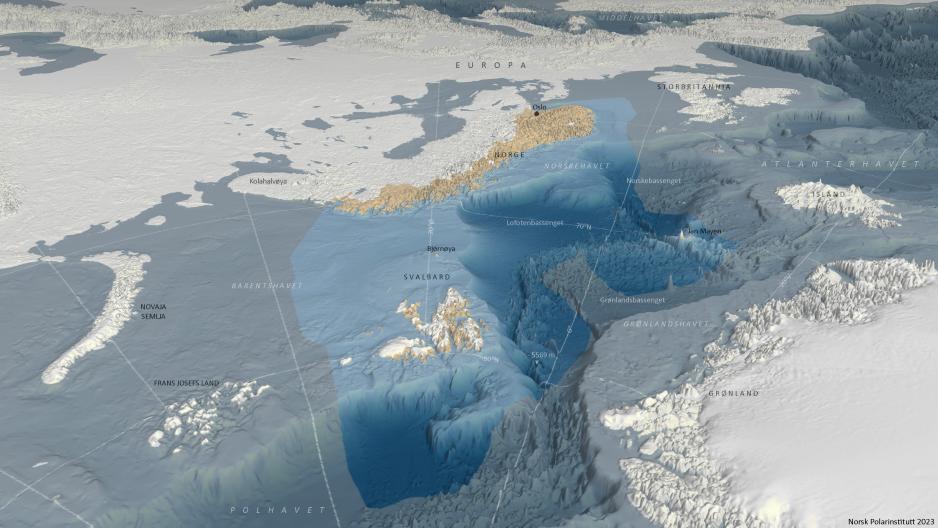
Norway's major coast and ocean areas, including the seabed and the Svalbard archipelago. (Map: The Norwegian Polar Institute 2023)
Low profile
"The longer a submarine sails without being detected, the harder it is for an opponent to deal with that threat because the submarine could then be located in a significantly larger area. Thus, it is very important for submarines to be able to operate covertly over time," says the Norwegian submarine chief.
Will the new submarine class have a greater ability to operate covertly than the current Ula class?
"Yes, it will. One of the most significant differences between the Ula class and the 212CD class is that the latter has an air-independent propulsion system based on fuel cells," says Robertsen and explains:
"The submarines of the Ula class have to charge their batteries regularly and then drive up to the surface with a diesel engine to snorkel. On the surface, submarines are most exposed to detection due to the noisy engine and the visible mast. With an air-dependent propulsion system, submarines can stay submerged much longer without snorkeling. Thus, the ability to operate covertly is definitely much better."
"In addition, almost all of the mechanics and electronics on the new submarines will be modern and help make them quieter."

Illustration of a 212CD submarine. (Source: Thyssenkrupp Marine Systems)
Focus on the North and undersea infrastructure
The Norwegian submarine services has a particular focus on surveillance and deterrence in the High North.
"We sail along the entire Norwegian coast but mainly operate in the North, both in terms of operations and participation in exercises," Robertsen elaborates.
Until the new submarines are in place, the Ula class, which was phased in from 1989-1992, still holds up well, he maintains.
"The submarines are getting old but have been upgraded throughout their entire service life and are still very capable. Five of them will have their service life extended until they are gradually phased out toward 2035."
Russian submarines are equipped to destroy undersea infrastructure. Is the Norwegian submarine currently paying extra attention to such infrastructure?
"In line with the rest of the Norwegian Navy, this is a clear focus for the submarine service. We must all admit that the focus on undersea infrastructure increased after the sabotage of the gas pipelines Nord Stream 1 and 2 in the Baltic Sea. The entire Navy continuously works together with the civil business sector to protect such infrastructure," Robertsen responds.



